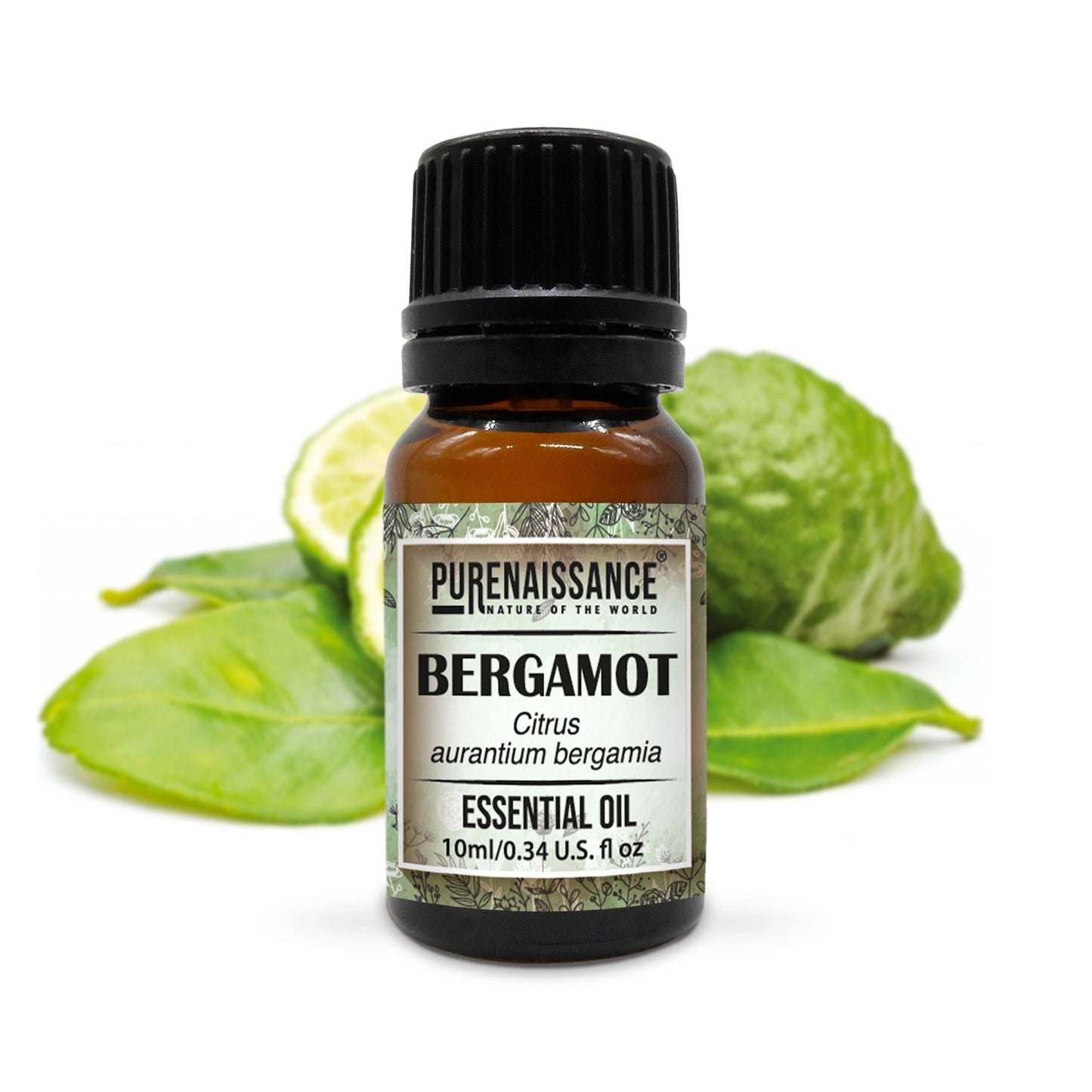Purenaissance
Pure Bergamot Essential Purenaissance Oil Therapeutic Grade, Best for Aromatherapy and Diffuser.
Pure Bergamot Essential Purenaissance Oil Therapeutic Grade, Best for Aromatherapy and Diffuser.
Couldn't load pickup availability
Product Description: Bergamot Essential Oil
Originally from Italy, bergamot is a small citrus fruit resembling a lemon, with thick, yellow-green skin. As it is rarely consumed as food, bergamot is uncommon in markets. However, its essential oil is widely used and is the primary reason for its cultivation, particularly along the Calabrian coast of Italy. Other producers, including Argentina, Brazil, Guinea, and Ivory Coast, contribute just 15% of global production.
Bergamot essential oil is prized for its digestive qualities and distinctive fresh, floral, and citrusy aroma. It offers a tangy yet sweet flavor, making it a unique addition to beverages, sorbets, confections, and dishes such as white meats and fish.
The oil is extracted from the peel using a cold-pressing technique developed in Italy in 1924, yielding approximately 0.5–0.65%. The quality of the oil depends on the fruit variety, with the "Femminello" variety considered the best, despite constituting only 20% of harvests. Due to its limited production, bergamot oil is susceptible to adulteration with cheaper substitutes like bergamot mint, bitter orange, or terpene blends.
Important: Consult a doctor before using bergamot essential oil for therapeutic purposes.
Bergamot Essential Oil - Technical Data Sheet
Botanical Family: Rutaceae
Appearance: Clear, mobile liquid (may contain wax deposits)
Color: Green to greenish-yellow
Odor: Citrus cologne-like fragrance
Plant Part Used: Peel (zest)
Extraction Method: Cold Press (Expression)
Type: 100% Natural
Origin: France
Chemical Composition:
- Limonene: 37.2%
- Linalyl Acetate: 30.1%
- Linalool: 8.8%
- γ-Terpinene: 6.8%
- β-Pinene: 2.8%
- Trace Compounds: Geranial, β-Bisabolene
- Contains 0.3–0.5% Bergaptene, a phototoxic compound.
Note: The oil is classified as hazardous due to phototoxicity.
Storage Conditions:
- Store at ambient temperature in a dark container.
- Keep away from oxidizing substances like bleach.
- Use stainless steel for bulk storage and glass for smaller quantities.
- Re-test after 12 months; shelf life is a maximum of 36 months under advised conditions.
Properties of Bergamot Essential Oil
Health Benefits:
- Anti-infective, antiseptic, antispasmodic, bactericidal
- Digestive stimulant
- Vermifuge (worm expeller)
Well-Being:
- Soothing, relaxing, sedative
- Purifying, stimulating
Beauty:
- Antiseptic, skin regenerator
Usage Tips for Bergamot Essential Oil
Health Applications:
Skin Benefits:
- Dermatitis, eczema, psoriasis: Dilute in vegetable oil and apply as a compress.
Respiratory Benefits:
- Infections: Use 5 drops in hot water for inhalation.
Digestive Benefits:
- Bloating, digestive issues: Add 1–2 drops to hot water, honey, or a neutral tablet.
- Colic or gas: Massage diluted oil in vegetable oil on the abdomen.
General Applications:
- Air purification: Diffuse the oil.
- Wounds: Wash with a diluted mixture and apply a dressing with 1–2 drops of oil.
Well-Being Applications:
Psychological Benefits:
- Mood enhancement: Diffuse a few drops in water.
- Stress relief: Apply diluted oil on wrists or use in a diffuser.
Relaxation & Sleep:
- Insomnia: Massage with oil diluted in sweet almond oil.
- Anxiety: Use in olfaction or diffusion.
Beauty Applications:
- Oily Hair: Add a few drops to shampoo.
- Oily Skin: Use diluted oil as a compress or massage.
Synergies with Other Essential Oils:
- For Relaxation: Combine with chamomile, lavender, petitgrain, or rose.
- For Antiseptic Effects: Blend with lemon or grapefruit.
- For Mood Enhancement: Mix with sweet orange or grapefruit to fight winter blues.
Precautions & Contraindications:
- Phototoxicity: Avoid sun exposure for 12 hours after application.
- Dilution Required: Always dilute with a carrier oil before topical use.
- Allergy Test: Perform a patch test before use.
- Not Suitable For: Children under 6 or pregnant women.
Toxicological Information:
- Inhalation: Non-hazardous.
- Skin Contact: Harmful; phototoxic.
- Eye Contact: Irritant.
- Ingestion: Harmful if swallowed.
Share


